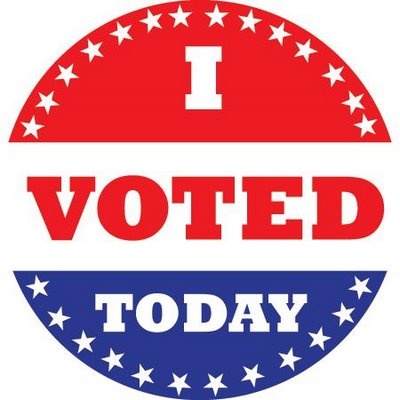Blind, but entitled to cast a ballot — op-ed piece in the New York Daily News
by Beth
Thanksgiving is coming soon, and many of the posts we’ll be publishing on the Easterseals national blog this month will be devoted to the people and things we are grateful for. What better way to start than with an op-ed piece published in the New York Daily News this week?Much to my happy surprise, they didn’t edit out my favorite line of the whole thing: “Most of us aren’t fortunate enough to have a spouse named Mike.” This month –and every month of the year –I am grateful to my husband, Mike Knezovich, for adjusting to my blindness along with me. The op-ed explains — here is Blind, but entitled to cast a ballot” in its entirety:
By Beth Finke
Monday, October 31, 2016
 I lost my sight in 1986, to a rare condition called retinopathy. By then I’d already voted twice, in national elections, as a fully-sighted person.
I lost my sight in 1986, to a rare condition called retinopathy. By then I’d already voted twice, in national elections, as a fully-sighted person.
Struggling to adjust to blindness, I was determined not to lose my ability to vote — not just casting a ballot, but the act of voting itself.
Going to the polls is essential. There’s no substitute for the feel of a voting device in your hand or the sound of your vote actually registering, a certainty that voting by absentee ballot can’t provide.
For three decades now I’ve searched for a voting experience equivalent to the one I enjoyed when I could see.
It’s a fair expectation. People who are blind are guaranteed that right by law — many laws, in fact, including at the national level alone: the National Voter Registration Act, the Voting Rights Act, the Help America Vote Act and the Federal Rehabilitation Act.
The technology has existed for many years, too. Text-to-speech software translates the candidate selections on the ballot into spoken choices; a special keypad then enables blind voters to choose their candidates by touch, with the selections confirmed by voice again before the ballot is cast.
Some places — like New York City — have more or less that setup, with ballot-marking devices that allow people who can’t see to make their choices in private.
But in many places, blind people can’t choose candidates on their own. The systems may work in theory, but they don’t in practice.
During the last 30 years I’ve made my way to the polls many times, each time hoping to recapture what I felt emotionally, and what I could actually do, before I became blind. What I experienced were more journeys of trepidation than fulfillment, not to mention the convoluted measures needed to approximate an act guaranteed by our Constitution.
We’ve come a long way of course since 1988, when I first voted as a blind person. The technology back then was punch card, so my husband Mike joined me in the booth, selected the candidates for me and placed my hand on top of the stylus so I could physically punch the ballot on my own.
In a subsequent election, Mike was away on business. I made it to the polls myself, but quickly discovered how much assistance I’d need without him. Two judges — one Democrat, one Republican — crowded with me and my seeing eye dog into the tiny polling booth.
I didn’t bother asking them to put my hand on the stylus so I could punch the card myself, just allowed a third party to vote for me with a second third party to witness.
Yes, I cast a ballot, but the experience was invasive and overheard by many.
Text-to-speech software became available in the mid-2000s, and the news coursed quickly through the blind community that we could now vote independently and privately. I live in Chicago, and the city sponsored free trainings at Chicago public libraries. I spent many hours there, getting a feel for the machines and practicing with the buttons on the handheld device.
When I arrived at the polling station in 2008, the technology was in place but no one could operate it. There’d been no training of staff in the sequences needed — enabling the software, activating the audio, even finding the headphones that ensure privacy of selection.
So backwards in time we went. Once again my husband Mike had to sign an affidavit, accompany me to the booth, read the candidates’ names out loud and hear my choices in response, as did everyone else within earshot. The same scenario repeated in 2012 during the national elections.
Next week we again have a national election of great import, and again, my hopes are raised that I’ll be able to exercise the same basic right that sighted people do — to vote in private without public assistance. Millions of Americans with disabilities share this ambition. . Instead, we need to rely on larger systems and resources. “Save yourself the trouble,” some suggest with a shrug. “Vote absentee.”
On a purely technical level, I won’t vote absentee as it’s historically fraught with challenges, including ballots getting damaged or lost, and in many cases not even counted.
It’s the larger imperative that compels me to the polls, however. People need to see me voting. The astonished comments I hear from people waiting with my seeing eye dog and me in queue tell me they really do want me to vote.
Those of us with disabilities can’t let others forget about us. In the not-too-distant past, people with disabilities did stay home, not just on voting day, but perpetually. We can never go back to those days, and voting publicly is one way to ensure we don’t.
Finke is the interactive community coordinator at Easterseals
headquarters in Chicago and the author of two books.






